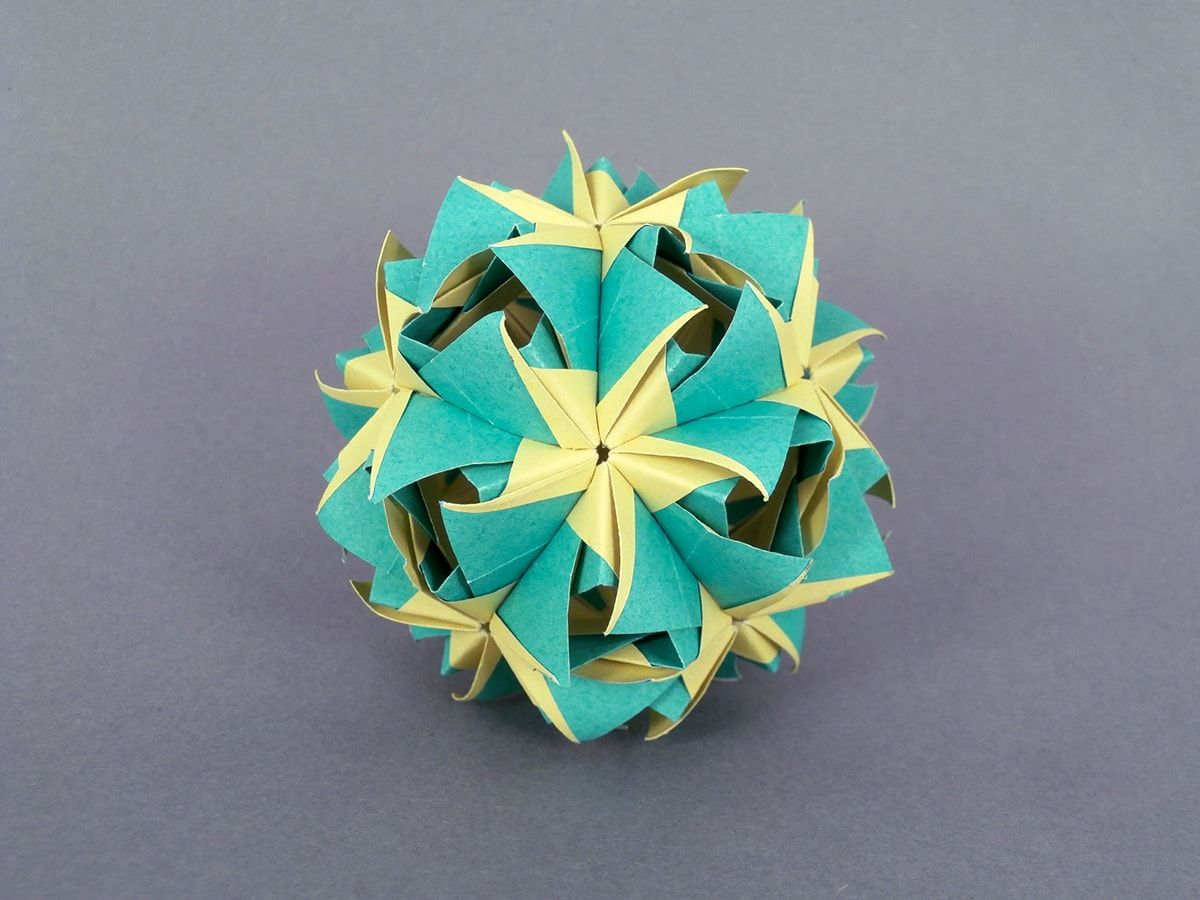
They work with recurring payments, but you can cancel anytime so one-time donations are also possible. It’s basically like paying me a tip as a thanks for my work and get some rewards in return, like early access to my tutorials and your name in the video (the “thank you” list). You can also contribute with small donations on Patreon or YouTube Channel Membership. The easiest way to support my work is simply watching my videos, clicking the like button, leaving comments and subscribing to my channel! Each design comes with suggestions for paper size and pattern type to use, and most 30-unit constructions can be made from 12 units, as well. If you like my work, please consider visiting and subscribing to my YouTube channel! You’ll find all my work, including models that are not in this website and also models from other origami artists. Everything is well connected without glue. Standard origami paper works well and I recommend small sizes like 7.5cm x 7.5cm square (the finished model will be about 6.5cm tall). This is a modular origami and you’ll need 30 square sheets of paper.
#30 unit modular origami how to#
Learn how to make all the other ones: cube, tetrahedron, octahedron and icosahedron. You can make it fully colored or with color change on the edges, depending on which side of the unit you use. The main form of modular origami is Unit Origami, which uses multiple of the same unit pieced together to form a larger model. This is a regular dodecahedron, so each face is a regular pentagon. Modular Origami Icosahedron From 30 Sonobe Units: How to make Modular Origami Icosahedron from 30 sonobe units. In this video you’ll learn how to make an origami dodecahedron, a polyhedron with twelve flat faces. Paper: 7.5cm x 7.5cm origami paper (30 sheets) These 3D shapes have a lot of symmetry, though not as much as the Platonic solids.Origami Dodecahedron designed by Jo Nakashima (05/2021) Questions about larger models will lead you to the Archimedean solids and the Johnson solids. Questions about coloring will lead you to the mathematics of graphs and networks (and big questions that remained unsolved for many centuries). One seemingly innocent question can easily lead to a mathematical rabbit hole. Once you've mastered the basic structure of each 3D shape, you may find yourself (as others have done) pondering deeper mathematical questions.Ĭan you arrange the sonobe units so two units of the same color never touch, if you only have three colors?Īre larger symmetric shapes possible? (Answer: yes!)Īre there relationships between the different 3D shapes? (For example, the icosahedron is basically built of triangles, but can you spot the pentagons lurking within? Or the triangles in the dodecahedron?) Sonobe units, like these ones piled in a stack, can be put together to create 3D shapes. These models are often 3d shapes how as prisms, cubes the more. The main form of modular origami the Unit Origami, which uses multiple a of equivalent unity shared together to input a larger model.

So, for a little effort you are rewarded with a vast number of models to explore. Who 30-unit spherical has the symmetries away an icosahedron. With one additional crease added to the units, Steve Krimball first formed the 30-unit ball (Alice Gray, On Modu- lar Origami) The Origamian vol. Many modular origami patterns, although they may use different units, have a similar method of combining units into a bigger creation. The building blocks, called units, are typically straightforward to fold the mathematical skill comes in assembling the larger structure and discovering the patterns within them. The units used in this project are square and can be combined alternately. Make small pieces from Origami, and assemble them to complex structure. That's where you use several pieces of folded paper as "building blocks" to create a larger, often symmetrical structure. Platonic Solid From Modular Origami: Modular origami is one of a category of origami. Particularly for modular origami, each fold must be done precisely, or the whole thing will fall apart. Any piece of origami will contain mathematical ideas and skills, and can take you on a fascinating, creative journey.Īs a geometer (mathematician who studies geometry), my favorite technique is modular origami. Origami is something that requires extremely detailed instructions. I'm a mathematician whose hobby is origami, and I love introducing people to mathematical ideas through crafts like paper folding. Both activities, however, share similar skills: precision, the ability to follow an algorithm, an intuition for shape, and a search for pattern and symmetry. This origami tutorial will teach you how to make a sonobe unit, and then how to assemble them to form a 30 units sonobe.


 0 kommentar(er)
0 kommentar(er)
